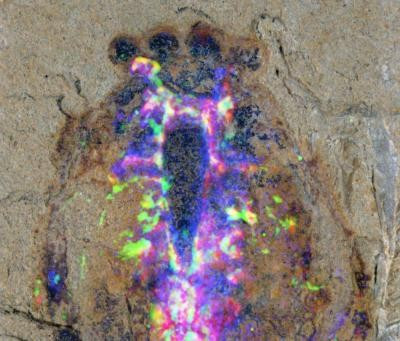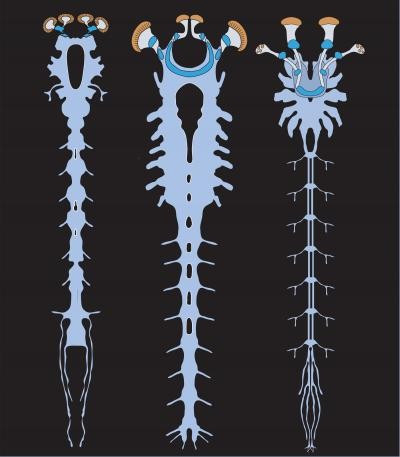Extinct Mega Claw Provides Missing Link Between Spiders and Insects

An extinct 'mega claw' creature that lived 520 million years ago has provided scientists with the missing link between spiders and insects.
Researchers at the University of Arizona and London's Natural History Museum say an "exquisitely preserved" fossil of a never-before described creature shows the ancestors of chelicerates, which include spiders and scorpions, branched off from the arthropod family around half a billion years ago.
The creature, described in the journal Nature, belongs to a group of arthropods known as megacheirans, meaning 'large claws'.
The newly discovered species, named Alalcomenaeus, either crawled or swam in the ocean and the speciman found has the earliest known complete nervous system.
It measured three centimetres in length and was found in the Chengjiang formation in southwest China. Scientists determined it belonged to a group of animals that had an elongated segmented body with a number of appendages that allowed it to swim or crawl.
The name megacheirans came from their long scissor-like appendages attached to their heads.

Senior author Nicholas Strausfeld said: "We now know that the megacheirans had central nervous systems very similar to today's horseshoe crabs and scorpions. This means the ancestors of spiders and their kin lived side by side with the ancestors of crustaceans in the Lower Cambrian."
Previously, palaeontologists have suggested megacheirans were related to chelicerates because the fangs spiders and scorpions have are similar to the scissor appendages but others argued this was not the case.
Study co-author Greg Edgecombe says they now have direct evidence to show the brain sends nerves into these appendages from the same place spiders do to their fangs.
"For the first time we can analyse how the segments of these fossil arthropods line up with each other the same way as we do with living species - using their nervous systems," he said.
The scientists applied advanced imaging techniques to scans showing the nervous system during fossilisation and ended up with a "beautiful nervous system in startling detail".

They compared this to the nervous systems of horseshoe crabs and scorpions and found without doubt that the creature belonged to the chelicerate family.
Strausfeld said: "The prominent appendages that gave the megacheirans their name were clearly used for grasping and holding and probably for sensory inputs. The parts of the brain that provide the wiring for where these large appendages arise are very large in this fossil. Based on their location, we can now say that the biting mouthparts in spiders and their relatives evolved from these appendages.
"Our new find is exciting because it shows that mandibulates (to which crustaceans belong) and chelicerates were already present as two distinct evolutionary trajectories 520 million years ago, which means their common ancestor must have existed much deeper in time.
"We expect to find fossils of animals that have persisted from more ancient times, and I'm hopeful we will one day find the ancestral type of both the mandibulate and chelicerate nervous system ground patterns. They had to come from somewhere. Now the search is on."
© Copyright IBTimes 2025. All rights reserved.






















